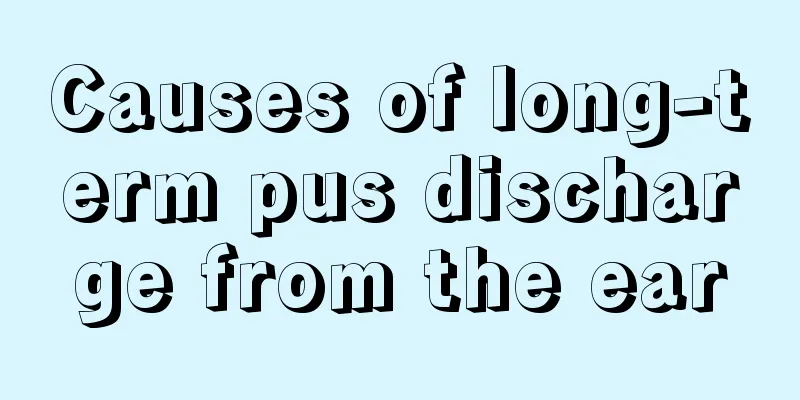Are there any sequelae to humeral fractures?

|
The humerus refers to the thickest bone in our upper limbs. It is directly related to the behavior and activities of our limbs, and the disease that is most likely to occur in this part is fracture. If a fracture occurs, it will take a long time to recover. In the recovery process, improper care may lead to a series of sequelae. For example, nerve damage and vascular damage are very likely problems with humeral fractures. 1. The most common nerve injury is radial nerve injury. Fractures of the middle and lower 1/3 of the humerus are prone to incomplete radial nerve injury due to compression or contusion of the fracture ends. Generally, if there is no recovery of nerve function after 2 to 3 months, surgical exploration is performed again. During the observation period, the wrist joint is placed in the functional position, and a movable support that can pull the fingers straight is used. The joints of the injured fingers are moved by themselves to prevent deformity or stiffness. 2. Vascular injury is not uncommon among complications of humeral shaft fractures. Generally, brachial artery injury will not cause limb necrosis but may also cause insufficient blood supply, so surgical repair of the blood vessels should still be performed. 3. Nonunion of fractures is common in fractures of the middle and lower 1/3 of the humerus. There are many reasons for nonunion of fractures, among which the reasons are largely related to the violence of the injury, the anatomical location of the fracture and the treatment method. Trauma and repeated reductions cause serious damage to the periosteum and surrounding soft tissue at the fracture site, and serious damage to the blood vessels in the soft tissue at the fracture end, resulting in an interruption of the nutrient supply required for fracture repair, thus affecting fracture healing. 4. Malformed healing: Because the shoulder joint has a large range of motion, even if the humeral fracture has some angulation, rotation or shortening deformity, it will not greatly affect the movement function of the injured limb. However, if the displacement of the humeral fracture is particularly severe, the requirements for fracture functional reduction cannot be met. It seriously damages the biomechanical relationship of the upper limbs, which will cause traumatic arthritis to the shoulder or elbow joints in the future, and will also cause pain to the injured. Therefore, for young and middle-aged injured people, osteotomy should be performed to correct deformity when conditions permit. If the angular deformity of the humeral shaft fracture is obvious and osteotomy is required for correction, the best site for osteotomy is the cancellous bone of the humeral neck. Otherwise, osteotomy at the humeral shaft fracture may cause nonunion. If the humeral neck fracture is severely deformed, osteotomy should be performed at the humeral neck for correction. 5. Shoulder and elbow joint dysfunction is more common in elderly patients. Therefore, for the elderly injured, not only should wide-range immobilization not be used for a long time, but the injured should also strengthen their muscle and joint functional activities as soon as possible. If shoulder or elbow joint dysfunction has occurred, their functional activity training should be strengthened, supplemented by physical therapy and body therapy to restore joint function as soon as possible. 6. Limited shoulder and elbow joint function: The most controversial issue is the impact of antegrade screw insertion on shoulder joint function. The reasons are: (1) The tail end of the intramedullary nail is not completely buried under the bone surface, thus occupying the subacromial space, causing shoulder joint impingement during movement, which is one of the main causes of shoulder pain and dysfunction. (2) Damage and scar formation of the supraspinatus tendon and synovial bursa are the main causes of limited shoulder abduction and pain in the absence of protrusion of the intramedullary nail tail. Paying attention to repairing the rotator cuff during surgery can reduce the occurrence of this complication. (3) The time and range of shoulder joint exercise after surgery will also affect functional recovery. (4) Older age is another reason for poor recovery of shoulder joint function. 7. Iatrogenic fractures: fractures of the greater tuberosity of the humerus, surgical neck fractures, split fractures at the fracture ends, and split fractures at the entry point of the nail are often related to improper operation. Carefully determine the nail entry point, make the opening large enough, expand the medullary properly, and gently insert the intramedullary nail to avoid forcefully hammering the nail in, which can prevent iatrogenic fractures. 8. Broken locking screw: If the patient has multiple injuries, when the lower limbs cannot move freely, and activities in bed are mainly supported by the upper limbs, and the fractures have not healed, excessive weight bearing may lead to broken proximal locking screws. 9. Fractures in the middle and lower thirds are prone to radial nerve injury, and fractures in the lower third are prone to nonunion. |
<<: Coke cures stomach problems
>>: How to cure cephalosporin drinking
Recommend
What to do with mild food poisoning, several detoxification methods
There are many causes of food poisoning, the most...
How to recuperate after liver cancer surgery? Principles of recuperation after liver cancer surgery
After liver cancer surgery, alpha-fetoprotein ris...
Who are the most susceptible to testicular cancer? These types of people need to pay attention
Congenital testicular maldevelopment leads to cry...
Western medicine for cooling blood
In summer, the weather is hot and people like to ...
I feel dizzy and my eyes are blurry recently
In our daily life, due to some bad eating habits,...
What are the causes of prostate tumors?
Prostate tumors are more common in young and midd...
Why does the stool become thinner
Thin stools may be caused by a variety of reasons...
How can I make my milk supply sufficient
For new mothers who have just given birth, the mo...
Can small cell lung cancer be cured?
After suffering from small cell lung cancer, you ...
What are the symptoms of excessive lung and stomach fire?
Each organ in the human body has its specific fun...
What are the common symptoms of uterine tumors?
Uterine tumors are more common in women aged 30 t...
Will kidney deficiency cause difficulty falling asleep?
Many people think that kidney deficiency is a sym...
Which hospital has good equipment for treating gallbladder cancer
Which hospital has good equipment for treating ga...
Can visual fatigue lead to myopia? What factors influence it?
If you experience visual fatigue in your life, yo...
Some tips for treating insomnia at night
For the treatment of insomnia, early diagnosis, p...









